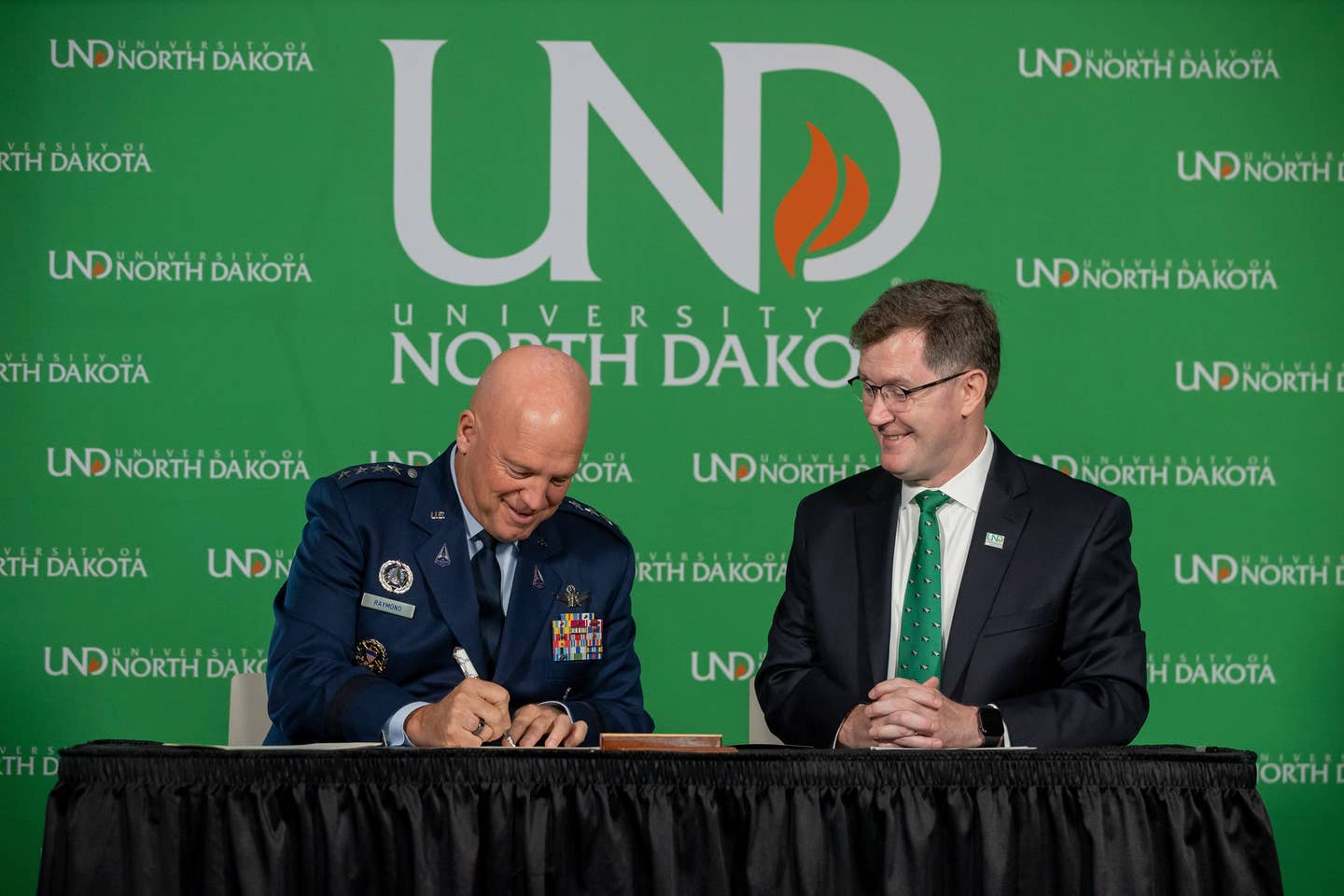
Gen. John W. “Jay” Raymond, chief of space operations, and University of North Dakota’s president Andy Armacost sign a memorandum of understanding Monday at the university in Grand Forks, North Dakota. Shawna Noel Schill
The University of North Dakota has become the first university in the country to partner with the U.S. Space Force as part of an effort to recruit and retain a highly skilled STEM workforce in the space sector.
“The Space Force faces some of the toughest challenges in engineering, science and technology,” Gen. John W. “Jay” Raymond, chief of space operations, said Monday from the university in Grand Fork, North Dakota.
“Space is hard. We need our nation’s brightest minds working to help us tackle these problems. That is why we have established the University Partnership Program (UPP) to harness innovation at universities across our country.” The department was formed in 2019 under the Trump administration as a branch of the armed forces and is the world’s first and only independent space force. It operates separately from NASA, which is a civilian agency.
In making the announcement Monday, Space Force officials said there are also secondary benefits of the partnership.
“Students who participate in the research or development opportunities created through the UPP do not need to become military or civilian Guardians [the official service title for those in Space Force],” Raymond said. “Our nation is depending on the next generations of scientists and engineers to help us solve the most challenging problems across a variety of industries. Any knowledge gained from the Space Force partnership is ultimately for the benefit of our society.”
UND’s president Andy Armacost also celebrated the news Monday.
“We are excited for this incredible opportunity to partner with the Space Force in developing students and Guardians into high-tech problem-solvers,” he said. “Students and faculty will apply their expertise to projects vital to the Space Force mission to deliver impactful solutions for increasing efficiency, resiliency and sustainability for space capabilities.”
Robert Kraus, dean of the university’s John D. Odegard School of Aerospace Sciences, said, “This agreement is the next step to furthering our relationship with the U.S. Space Force, and we look forward to working with them to solve the problems of tomorrow and to educate and train the workforce of the future.”
UND is one of the largest aviation universities in the U.S. with nearly 2,000 students in aviation-related programs. The agreement with Space Force extends beyond its College of Aerospace to other departments, including the College of Engineering and Mines, the College of Arts and Sciences and the Air Force ROTC.
Later this year, 10 other organizations are expected to join the program:
- Georgia Tech
- Howard University
- MIT
- North Carolina A&T
- Purdue University
- The University of Colorado System, starting with Boulder and Colorado Springs
- The University of Texas System, starting with Austin and El Paso
- USC
Universities were selected based on four criteria:
- The quality of STEM (science, technology, engineering and mathematics) degree offerings and space-related research laboratories and initiatives
- The strength of their ROTC program
- Diversity in their student population
- Availability for degrees and programming designed to support military, veterans and their families in pursuing higher education
Space Force says as part of its next steps, it will work with UND to outline specific implementation milestones to meet the program’s four main goals:
- Establish opportunities for world-class research, advanced academic degrees, and workforce and leadership development for USSF Guardians
- Identify and pursue research areas of mutual interest with member universities, individually and collectively
- Establish scholarship, internship and mentorship opportunities for university students and ROTC cadets
- Recruit and develop diverse officer, enlisted, and civilian Guardians with a particular focus on STEM.

Sign-up for newsletters & special offers!
Get the latest FLYING stories & special offers delivered directly to your inbox






